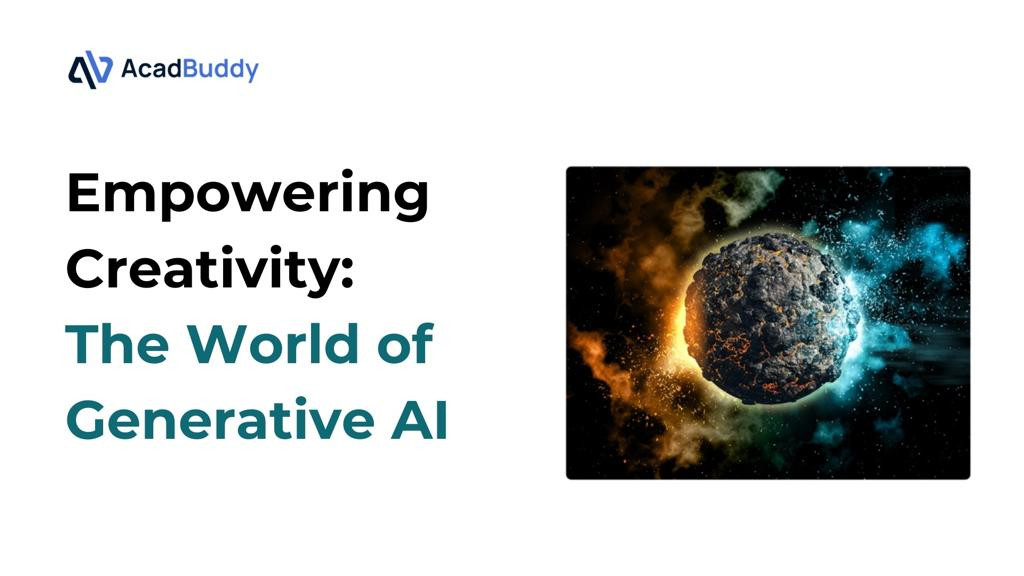Empowering Creativity: The World of Generative AIl
Generative Adversarial Networks (GANs), also known as "generative adversarial networks," are a potent subset of artificial intelligence that prioritizes the production of fresh, original information. Generative AI has the unique capacity to create wholly new data that is similar to, but different from, the training data it was fed, in contrast to other AI systems that depend on pre-existing data for tasks like categorization or prediction.
Innovation Unleashed: Generative AI Revolutionizes Industries, Opening Up New Frontiers in Art, Design, and Beyond.
GANs, which are made up of a generator and a discriminator neural network, are at the core of generative AI. Together, these networks engage in a competitive learning process. The generator's job is to produce information that closely mimics real-world examples from the training dataset, such as pictures, texts, or even sounds. Contrarily, the discriminator is in charge of making a distinction between actual data and the generated fake data.
The generator starts out by producing random noise while it is being trained. Following that, the discriminator assesses this fake data and informs the generator. The generator improves its output as training goes on, resulting in data that more closely mimics real-world examples. This iterative process continues until there is little to no difference between the generated data and actual data.
The possible uses of generative AI are numerous and varied. It may produce lifelike representations in the visual arts, from realistic faces to completely fictitious environments. This has ramifications for creating video games, creating special effects, and even creating virtual worlds. Generative AI can produce distinctive garment designs in the fashion business, potentially altering the creative process.
Generative AI can create articles, stories, poetry, and even code in the area of textual material. For example, it has been applied to generate news items based on prompts or mimic the writing style of well-known authors. This skill has the potential to expedite content generation across a range of sectors, including marketing and journalism.
The applications of generative AI are countless and diverse. In the visual arts, it can result in convincing depictions of everything from imaginary locations to realistic faces. This has implications for the development of video games, special effects, and even virtual worlds. In the fashion industry, generative AI may create distinctive garment designs, potentially changing the creative process.
In the realm of textual content, generative AI is capable of producing articles, novels, poetry, and even code. It has been used, for instance, to generate news articles from prompts or copy famous authors' writing styles. This ability has the potential to speed up content creation in a variety of industries, including journalism and marketing.
Finally, the development of generative AI, powered by GANs, is a truly astonishing advance in AI. Its capacity to provide fresh, original content in a variety of fields has broad ramifications for sectors ranging from entertainment and the arts to healthcare and beyond. However, it also presents issues with prejudice, ethics, and responsible use, highlighting the significance of careful development and use of this potent technology.











